MH370: The key pieces of debris found by the public
- Published
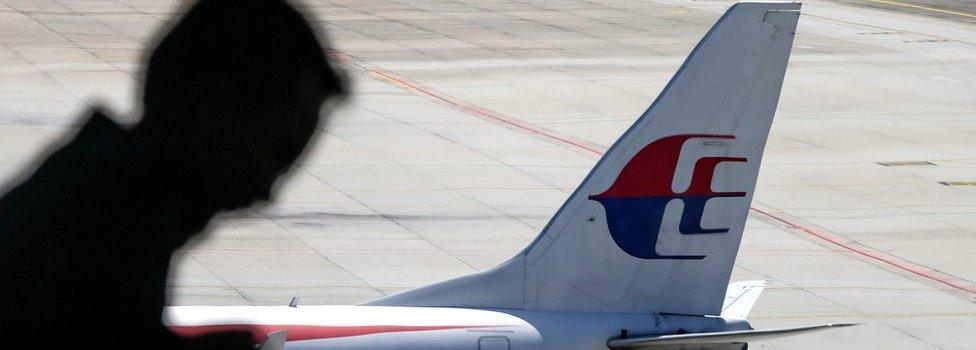
The underwater search for flight MH370 has ended, with no trace of the Malaysian Airlines plane being found.
While the search has been going on, more than 20 pieces, external of possible debris have been found by members of the public, on the African coast and islands in the Indian Ocean.
Most have been handed in to French authorities or the Australian Transport Safety Bureau , external(ATSB) which has been co-ordinating the search.
So far only a handful have been confirmed as "definitely" or "almost certainly" from the doomed plane.

'Definitely' from MH370
Right wing flaperon
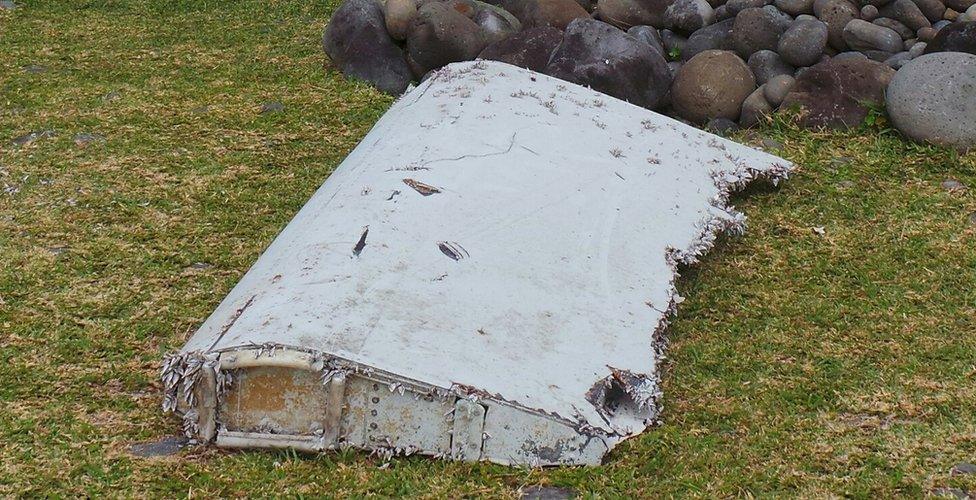
Found: July 2015, on a beach in Saint Denis on Reunion Island
Part: A section from the plane's right wing that helps to control speed and position
The flaperon was the first piece of potential debris found. In September 2015 French judicial authorities who examined it confirmed it did come from MH370. One of three numbers found on the part matched up with the plane's serial number, 9M-MRO.
Left outboard flap trailing edge
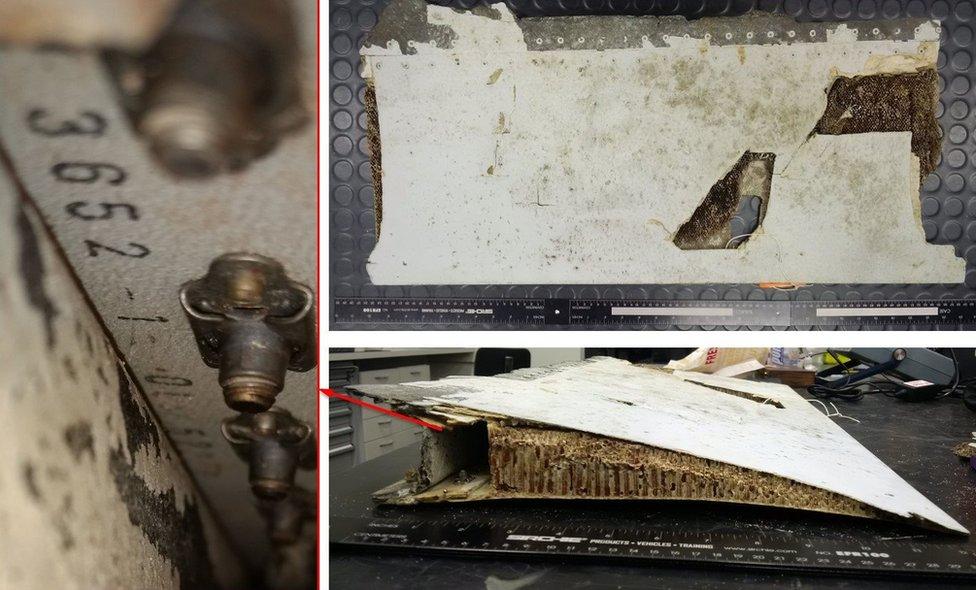
Found: May 2016, on Ilot Bernache in Mauritius
Part: The rear edge of an outboard flap - which controls the plane's rolling and banking - on the left wing
Investigators say, external this piece has identification numbers belonging to parts that were uniquely made for Malaysia Airlines and incorporated into MH370's plane.
Right outboard flap

Found: June 2016, on Pemba island in Tanzania
Part: A flap from the plane's right wing
One of the largest pieces of debris found so far, this piece had identification numbers and date stamps tallying , externalwith those belonging to MH370 parts.

'Almost certainly' from MH370
Flap track fairing
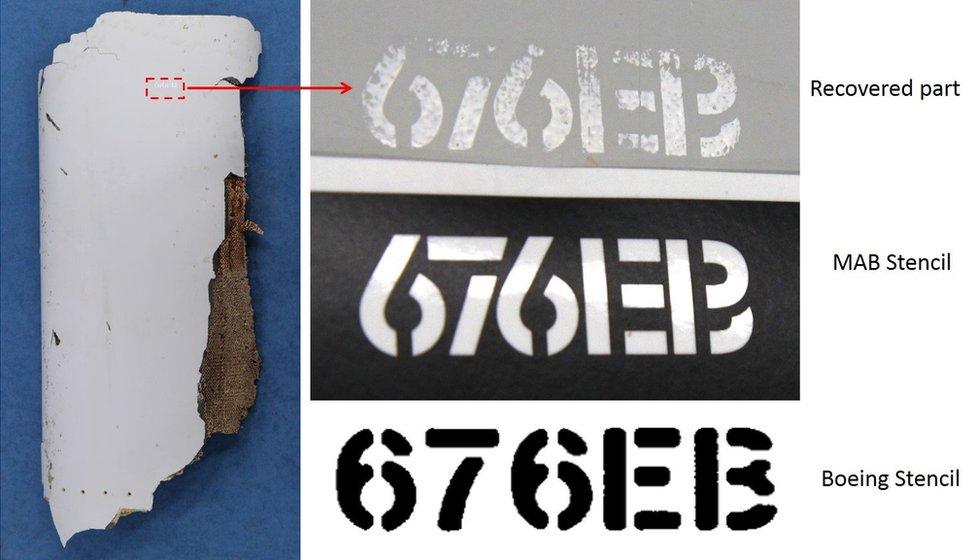
Found: December 2015, on Daghatane Beach in Mozambique
Part: A part on the underside of the right wing which reduces wind drag
Also known as "676EB", this piece has a stencilled number with the same font and colour used by Malaysia Airlines. Investigators also found, external that the part had been repainted, which matched the maintenance records for MH370.
Horizontal stabiliser panel
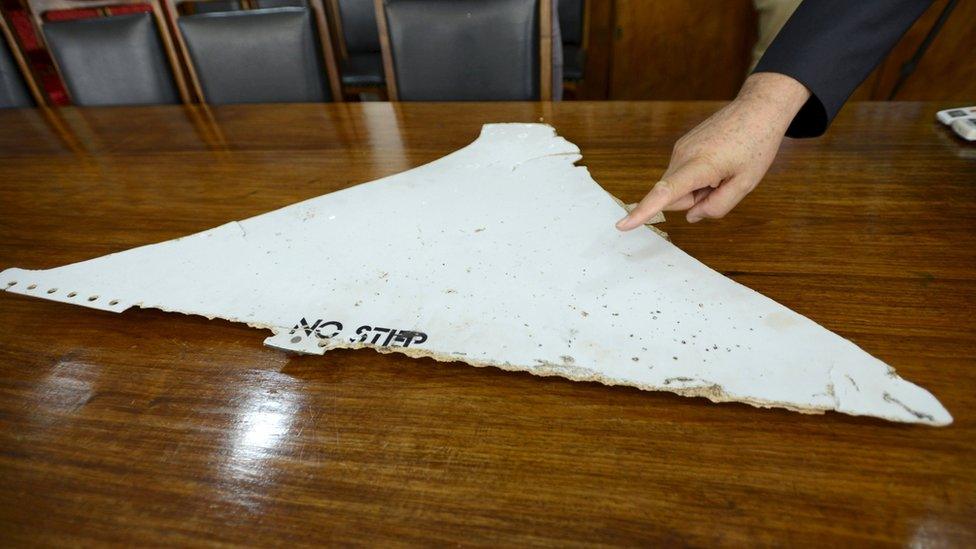
Found: February 2016, at Valankulo on the Paluma sandbank in Mozambique
Part: A panel from the right part of a plane's tail
The ATSB says, external the stencilling of the words "No Step" is consistent with that used by Malaysia Airlines. It also has a fastener matching those used in assembly of aircraft next in the production line of MH370's aircraft.
Engine nose cowling segment
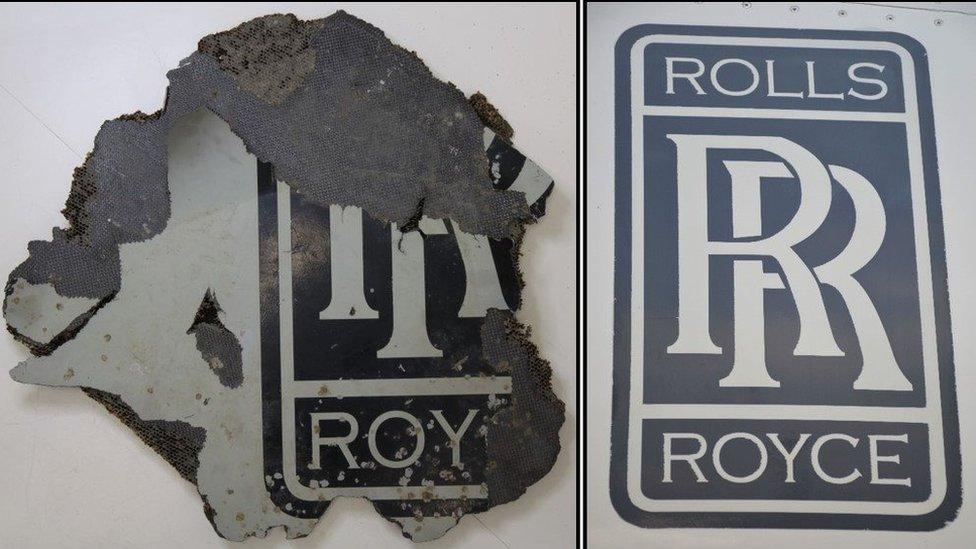
Found: March 2016, at Mossel Bay, South Africa
Part: A piece covering an aeroplane's engine
This piece carries the logo of Rolls-Royce which manufactures parts for Boeing. The ATSB says , externalthe stencil closely matched that used on other Boeing-777s owned by Malaysian Airlines.
Closet panel
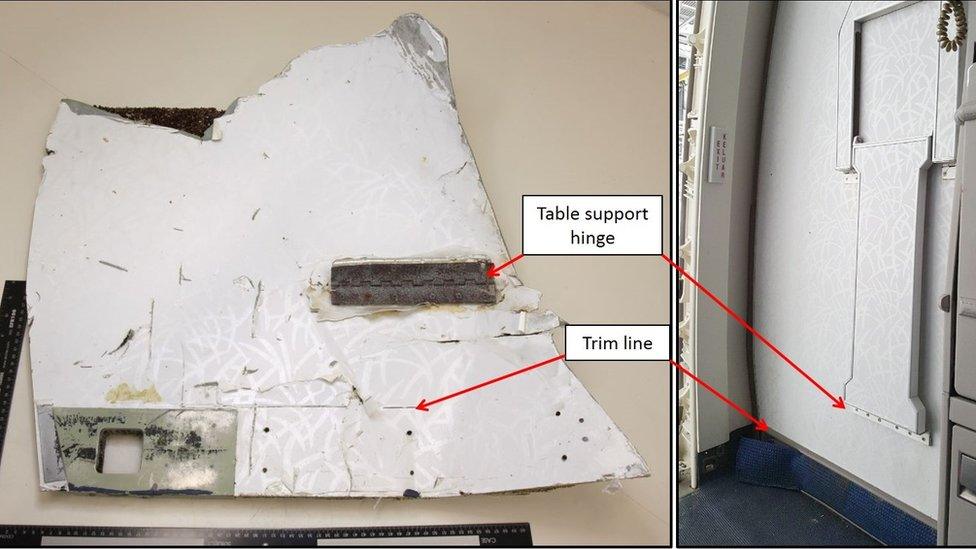
Found: March 2016, on Rodrigues Island in Mauritius
Part: A panel from a stowage closet near one of the plane's doors
ATSB investigators say, external that the presence of a hinge and a trim line indicate this was likely part of a closet panel that contained a foldable work-table. Its decorative pattern also matches that of Malaysia Airlines' Boeing-777 aircraft, and is not used by any other airlines' Boeing-777s.
Cabin interior panel
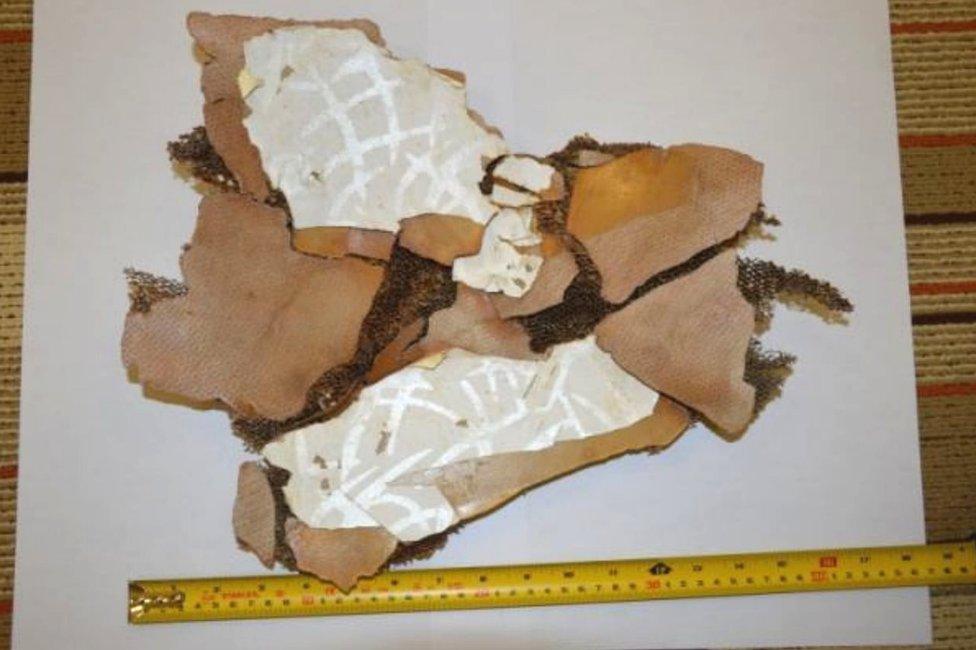
Found: June 2016, on Antsiraka beach in Madagascar
Part: A fragment of the interior panelling of the plane
This panel, which appears to have a similar decorative pattern as that of the closet panel, was examined by Malaysian investigators who declared it as "almost certainly" from MH370.

Still under investigation
Many pieces of debris are still being evaluated for links to MH370.
These include items found by Blaine Gibson, an American lawyer who has gone on self-funded expeditions around the world to look for MH370 debris. Among other things, in Madagascar he found a seat back panel that could have housed a monitor.
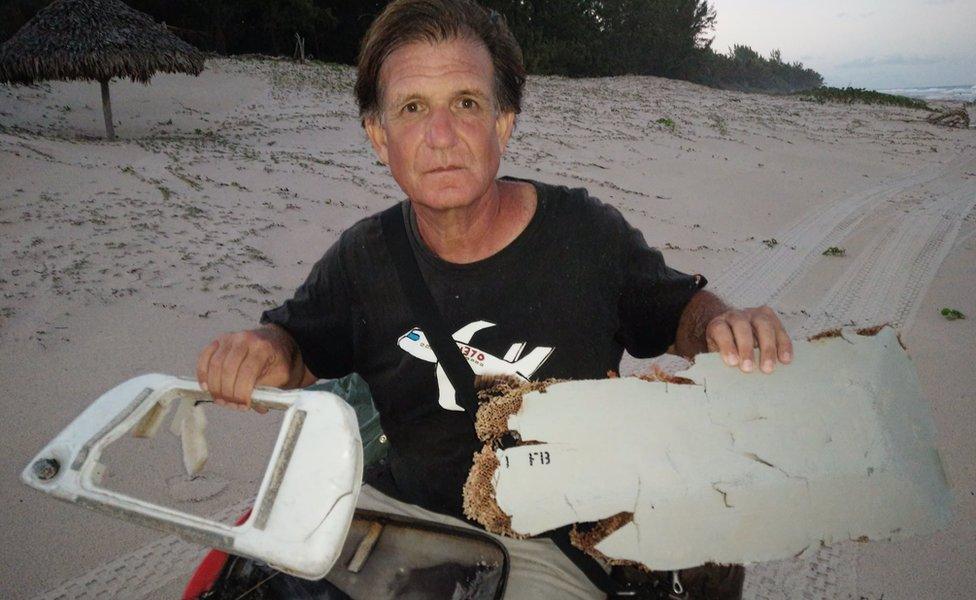


False alarms
'Burnt debris'
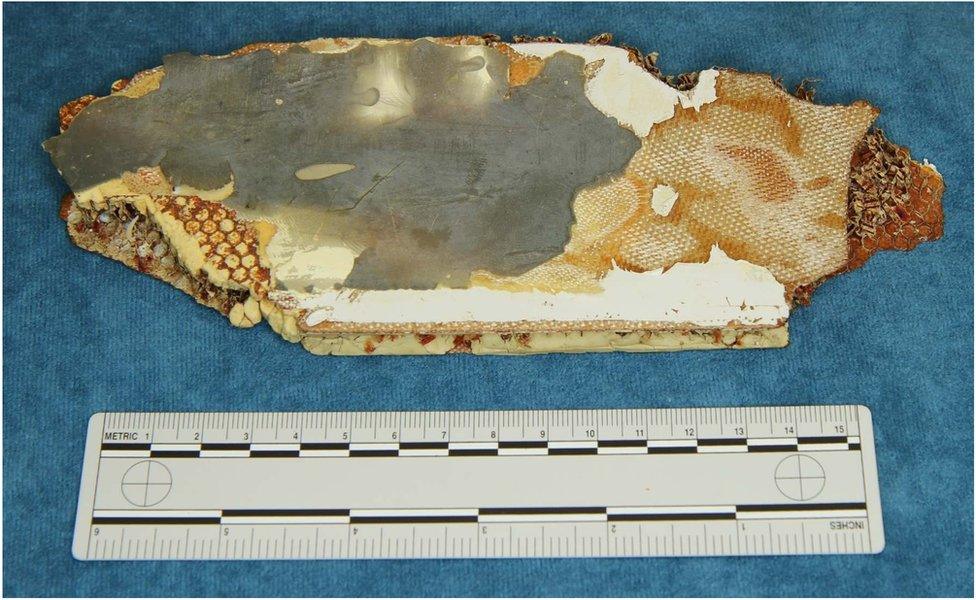

Found: February 2016, near Sainte Luce on the Madagascar coast
Part: Two fibreglass honeycomb composite panels
These pieces initially sparked speculation that a fire had broken out onboard MH370, as they appear to have burn marks or discolouration caused by burning.
But the ATSB found that, external the discolouration was caused by the presence of resin. One item had small marks from "localised heating", but it was unclear how those marks were made.
Australian authorities have cast doubt on the fire theory and say work is still ongoing to determine if these pieces belong to a Boeing-777 aircraft.
Kangaroo Island piece
Another piece found on Kangaroo Island in Australia in June 2016, which had the words "Caution No Step" stencilled on it, was thought to confirm that the aeroplane went down in the "seventh arc" of the southern Indian Ocean, where search efforts have focused on.
The ATSB said, external later that the piece did not match Boeing manufacturing specifications and thus could not have come from a Boeing aircraft.
- Published20 December 2016

- Published17 January 2017
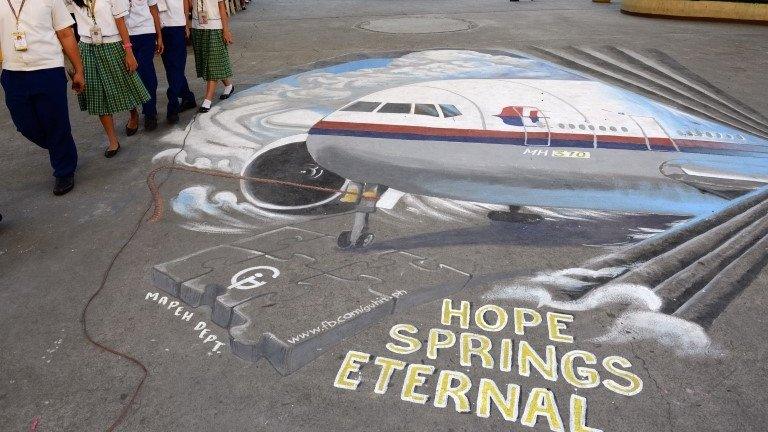
- Published2 November 2016
